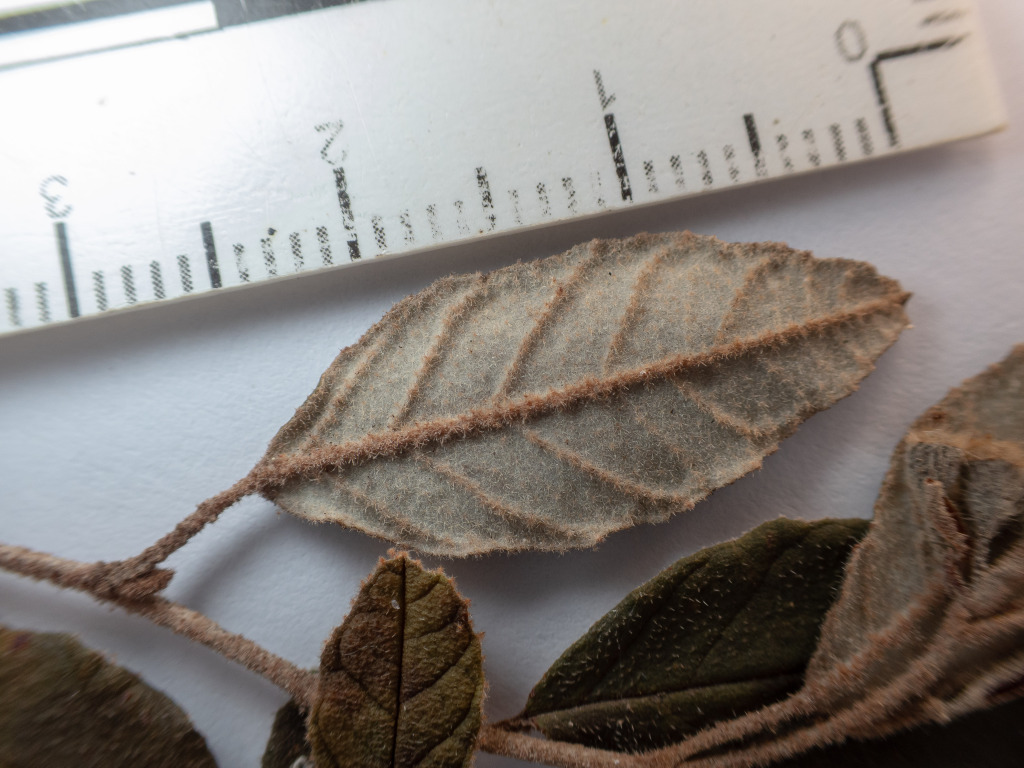Pomaderris racemosa
Hook.Shrub to small tree, 2–8 m high; branchlets densely stellate-pubescent. Leaves ovate to broadly elliptic, 15–20(–45) mm long, 8–12(–20) mm wide, obtuse, rarely emarginate, margins usually sinuate-dentate, upper surface glabrous or sparsely simple- or stellate-hispid, lower surface densely stellate-pubescent (but the epidermis usually visible beneath the hair layer), lateral veins usually conspicuous; stipules 2–4 mm long, deciduous. Inflorescences slender terminal and/or axillary racemes or panicles, 2–4 cm long; bracts deciduous. Flowers cream, externally greyish or rusty stellate-pubescent; pedicels 1–3.5 mm long; hypanthium c. 1 mm long; sepals 1.5–1.8(–2) mm long, deciduous; petals absent; disc absent; ovary c. half superior, summit stellate-pubescent, style branched at or above middle. Operculum membranous, from one-third to nearly equal mericarp length, or sometimes indistinct. Flowers Oct.–Dec.
Wim, GleP, VVP, VRiv, GipP, OtP, WaP, Gold, CVU, GGr, DunT, NIS, EGU, HSF, HNF, OtR, VAlp. Also SA, Tas. Scattered through sheltered forests and riparian scrubs from the far south-west to near Rosedale.
Large-leaved and small-leaved forms occasionally co-occur (e.g. Warrandyte area) with no apparent intermediates.
Some intergradation with P. elachophylla probably occurs in the Grampians (and possibly other areas) where the two species grow together.
Walsh, N.G. (1999). Pomaderris. In: Walsh, N.G.; Entwisle, T.J., Flora of Victoria Vol. 4, Cornaceae to Asteraceae, pp. 85–109. Inkata Press, Melbourne.
 Spinning
Spinning

